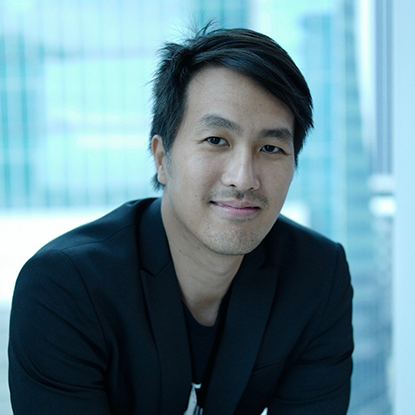The CPF is a financial cornerstone of all Singapore citizens and permanent residents. Despite its critics, I believe the CPF plays a key role in helping Singaporeans prepare for their retirement, healthcare, and housing needs.
The CPF Ordinary Account (OA) and Special Account (SA) currently pay an annual interest rate of 2.5% and 4% respectively. But for those who wish to earn a higher return, the CPF Investment Scheme (CPFIS) also provides members with the option to invest part of their CPF savings in stocks, bonds, and other financial products.
With inflation in Singapore rising to 4% recently, more people could be tempted to invest in the markets to beat inflation. However, there are important things to consider before you decide to move your money out of the safety of your CPF.
1. CPF is for retirement
The very first thing to remember is that your CPF savings is ultimately meant for your retirement. The average life expectancy in Singapore is 83.7 years; this means that many of us will need enough savings to last almost 20 years after we retire.
Knowing this, we must invest prudently and not take unnecessary risks with our CPF money. If you lose your CPF money (and assuming you have no other retirement plan), you may not have enough money to comfortably live out the rest of your years.
The problem is many people don’t actually know how to invest -- or at least do well consistently. According to FY2020 data, over half of those who invested their CPF ended worse off than leaving their money in their OA which earns 2.5% interest risk-free.
If you're new to investing and looking for some guidance to get started, consider robo-advisors and compare the different options to find one that best suit your needs.
2. CPFIS included ≠ good investment
CPFIS provides a list of included products which you invest in using your CPF savings. These include unit trusts, insurance products, ETFS, fixed deposits, bonds, stocks, and gold. For stocks alone, there are over hundreds of CPF-included companies.
However, just because CPFIS has included a particular stock (or financial instrument) for investment doesn’t necessarily mean it’s a good investment. That’s because the stock criteria for inclusion is very straightforward, and tells nothing about the quality of the company.
You still need to do your research to identify a high-quality company to invest in. To help you along, you can ask yourself these questions when you’re doing your research:
- Is the company’s business model resilient and simple to understand?
- Does it have a long-term competitive advantage in its industry?
- Does it have a runway for growth and expansion?
- What are the business risks, and are you comfortable with them?
- Does the company generate predictable revenues, cash flow, and dividends?
- How much debt does the company have and is the amount manageable?
- Can you earn a dividend yield above 4%?
While not exhaustive, these questions can help point you in the right direction as you find out more a company and its business operations.
3. Know the various fees and charges
In the past, financial advisors could charge a wrap fee of up to 1% per annum when you purchased a financial product using your CPF savings. At first glance, 1% doesn’t sound like a lot to most people. But if you do a math, even a 1% fee is quite expensive!
For example, if your unit trust earns a 5% return this year and you deduct 1% in fees, you are effectively handing over 20% of your profit (1% ÷ 5% = 20%) to your financial advisor.
Thankfully, the government has worked to remove and reduce the fees that financial advisors can charge for investing your CPF monies. Since October 2020, financial advisors can no longer charge any sales fees, and only charge a wrap fee of up to 0.4% per annum for CPFIS members.
There are also fees to consider when investing your CPF in other instruments like gold, stocks, bonds, and insurance products. Take the time to understand the various fees and charges before you invest your CPF savings.
4. Your investments must earn more than 4% yield
If you are aware of the risks, then the next thing to consider is that your investments must consistently beat not just the 2.5% CPF OA interest rate, but the 4% CPF SA interest rate. Because if you can’t do that, then it makes more sense to simply transfer/leave your savings in the CPF SA.
To be even more prudent, I invest my CPF monies only when a stock is able to pay me a dividend yield higher than 4%. The reason for this is because I want a stock that can beat the CPF SA interest rate from the get-go, so I don’t have to rely on capital gains for returns. This is not to say that I ignore investing for capital gains, but simply that any capital gains I receive is a bonus. To do this, you’d need to do your research to identify a resilient business with predictable revenue and cash flows, which allows it to pay a steady or growing dividend per share.
5. Invest during a market crash
Finally, the best time to invest is during a market crash when high-quality stocks are going for bargain prices. Most people know this, but many find it extremely hard to buy when markets are crashing down. The reason is because many investors don’t actually know the intrinsic value of a stock. And if you don’t know the value of a stock, it’s easy to be fearful as you watch other investors panic. But if you’ve done your research and understand a stock inside out, you will feel safe investing during a crash because you know the stock will hold onto its fundamental value regardless of the current volatility.
For example, DBS Bank fell to a low of S$18 in March 2020 when COVID-19 emerged. To make matters, the MAS later ruled that Singapore banks had to cut their dividends to conserve cash during the pandemic. As the situation stabilized and eventually improved, the MAS removed the dividend cap a year later. DBS Bank is now trading at S$34 (as of 1 March 2022).
For investors who stayed calm and invested in DBS during the height of the pandemic, they would have determined that the MAS dividend cap was a temporary measure and that dividends would eventually return to normal.
Chart: Yahoo Finance
DBS Bank paid a dividend per share of $$1.20 in FY2021, which would give investors a yield on cost of 6.7% right now if they invested in DBS at S$18 in 2020. Easily beating the 4% CPF SA interest rate. Not to mention the nearly 90% in capital gains as well.
Final thoughts
The fact that we have the option to invest our CPF savings is a big plus, but it is also a double-edged sword if you don’t know what you’re doing. When it comes to our retirement savings, it’s important to be prudent and only invest in high-quality stocks or instruments that you intimately understand. At the same time, if you don’t have the time nor inclination to the research required, it’s perfectly fine to leave your money in your CPF and earn a risk-free interest. Do your due diligence before investing your CPF or cash, and learn which are the best platforms to kickstart your investing journey.
Start managing and saving money like a pro with SingSaver’s weekly financial roundups! We dole out easy-to-follow money-saving tips, the latest financial trends and the hottest promotions every week, right into your inbox. This is one mailer you don’t want to miss.
Sign up today to receive our exclusive free investing guide for beginners!
Read these next:
Should You Invest Your CPF Ordinary Account (OA) Money?CPF Investment Scheme (CPFIS): Guide To Investing With Your CPF
CPF Basic Retirement Sum: How to maximise your retirement payouts
7 Investments You Can Make Under The CPF Investment Scheme (CPFIS)
A Complete Guide To CPF In Singapore (2022)
Similar articles
3 Awful Consequences Of Trying To Invest Your CPF Money
8 Investments You Can Make Under The CPF Investment Scheme (CPFIS)
CPF Investment Scheme (CPFIS): Guide To Investing With Your CPF
5 Of The Best Things You Could Do With Your Investment Dividends
Should You Invest Your CPF Ordinary Account (OA) Money?
Should You Always Pay Your HDB Downpayment With Cash Or CPF?
9 Crucial Things You Should Not Be Saving Your Money On
The SSB vs CPF: Which One Has Better Returns?










